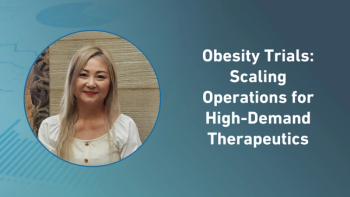
- Applied Clinical Trials-10-01-2020
- Volume 29
- Issue 10
COVID Advances Clinical Trial Transparency
Sponsors are beginning to make their study protocols public as pressure for a COVID-19 vaccine rises.
Growing public concerns about politics playing a role in vetting potential vaccines and therapies to combat the COVID-19 pandemic has prompted sponsors of leading clinical trials to make public their study protocols and statistical analysis plans. One aim of such extensive disclosure of research methods is to address fears that a push for speedy results from the White House might lead to FDA authorization or approval of a COVID vaccine before Phase III data has been fully evaluated. Regulatory authorities and industry leaders have loudly proclaimed their adherence to good science, and vaccine sponsors pledged to collect sufficient data to demonstrate product safety and efficacy before seeking FDA approval. But the debate continues.
Several recently issued research protocols specify numbers of participants in the late-stage clinical trials, age and sub-group goals, enrollment procedures, plans for blinding, randomized assignment to placebo, and efficacy assessments. Details include dosing schedules and adverse event assessments.
Moderna CEO Stephane Bancel led the move toward greater transparency in August by issuing the
Pfizer and AstraZeneca similarly released detailed trial protocol documents, acknowledging the need for greater transparency in COVID vaccine research. Pfizer specifies the vaccine candidate and dose for Phase II/III testing and that it expects to assess nearly 44,000 participants, with half receiving the vaccine.
In launching its Phase III ENSEMBLE study a few weeks later for its vaccine candidate, Johnson & Johnson’s Janssen unit also unveiled its
Novavax announced on Sept. 24 that it, too, had initiated its first
The disclosure of these usually confidential details on research endpoints, assessment timeframes, and study analysis plans aim to promote information sharing among vaccine developers, and also build public confidence. Although vaccine study sponsors had provided the usual public information on study sites and enrollment plans, more details on statistical analysis efforts should facilitate outside assessment of decisions by sponsors to seek input from independent data safety monitoring boards or to stop a trial early. And with the US government providing billions in support of most of these vaccine development programs, independent scientists believe the public has the right to such information.
Jill Wechsler is Applied Clinical Trials' Washington Editor Correspondent
Articles in this issue
about 5 years ago
Better Cardiac Safety Trialsabout 5 years ago
Applied Clinical Trials, October 2020 Issue (PDF)about 5 years ago
Shifting Perspectives on Site Networks to Create Positive Changeabout 5 years ago
News Notes (October)about 5 years ago
When Trials Stumble, Mobile Research Nursing Lends a Helping Handabout 5 years ago
Europe's COVID Vaccine Bids Still Veiled in Secrecyabout 5 years ago
The Future of Remote Trialsabout 5 years ago
COVID-19 Highlights Need for More Diversity in TrialsNewsletter
Stay current in clinical research with Applied Clinical Trials, providing expert insights, regulatory updates, and practical strategies for successful clinical trial design and execution.




